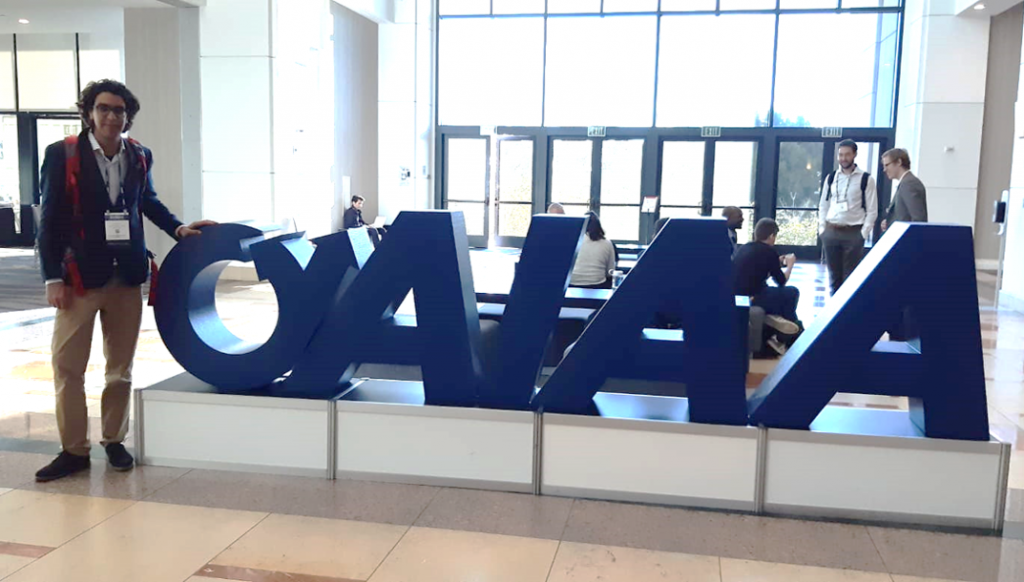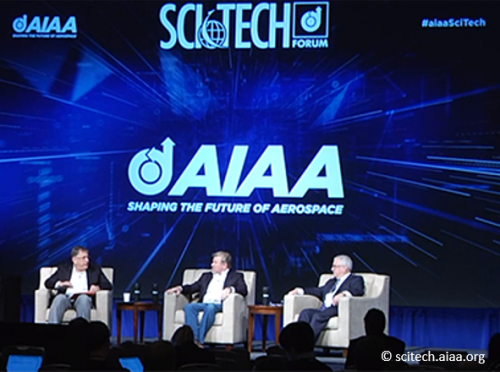SABRE at AIAA SciTech 2019 Forum
Members of the SABRE team attended the world’s largest aerospace conference, AIAA Scitech 2019 forum in San Diego, USA, where they presented their work on novel morphing techniques for rotorcraft.
Members of the Horizon 2020 SABRE project (Shape Adaptive Blades for Rotorcraft Efficiency –sabreproject.eu), which is led by Ben Woods from the Bristol Composites Institute (ACCIS) at University of Bristol, recently attended the AIAA Scitech 2019 Forum in San Diego, California, USA. Three researchers, Amine Abdelmoula, Stephane Fournier and Vaclav Ondra presented their work on novel morphing techniques in rotorcraft. These morphing techniques should allow rotorcraft to operate with increased performance and decreased fuel consumption, thereby decreasing the operating cost and environmental impact of helicopter aviation.
Amine Abdelmoula, who is a PhD student at the University of Munich, presented the essence of his publication “Aerodynamic Performance of Morphed Camber Rotor Airfoils”. In this presentation, Amine focused on the aerodynamic performance of morphed airfoils to evaluate whether the active camber airfolds can achieve higher levels of lift while reducing the drag. To this end, several degrees of morphing camber were applied to the trailing-edge section of the NACA23012 airfoil. The numerical investigations were conducted by means of RANS CFD simulations over a range of Mach numbers and angle of attack which covers the operational regime on the main rotor blade of the Bo105 helicopter. Amine’s work highlighted that the morphed camber airfoils has a potential to improve the overall efficiency of the rotorcraft.

Stephane Fournier, a senior research associate at University of Bristol, presented his paper on “Surrogate Modelling of the Steady Aeroelastic Performance of an Active Camber Morphing Concept”. In his presentation, Stephane discussed the design of the morphing concept called FishBAC (Fish Bone Active Camber) and its integration into a Bo105 main rotor blade. He also presented performance analysis results that confirmed that FishBAC is a promising morphing technology which development will continue in the future.
Vaclav Ondra, a research associate at University of Bristol, spoke about the development of an active tendon concept. The main idea of the active tendon concept is to incorporate a new structural element, referred to as a tendon, into the main rotor blade in order to provide a means for controlling the blade’s dynamic properties. In his contribution, titled “An active tendon concept in rotorcraft with variable speed rotors: free vibration perspective”, he explored the possibility of employing the active tendon concept not only in morphed rotorcraft wings, but also in variable rotor speed helicopters. It is known that the while variable rotor speed helicopters have higher performance than classical helicopter with a single rotor speed, they suffer from dangerous vibration loading. In his presentation, Vaclav demonstrated that the active tendon concept enables rotorcraft with variable rotor speed operate safely by controlling the vibration characteristics of the blades.
AIAA SciTech Forum is one of the largest annual aerospace conferences in the world. It is therefore a great opportunity for the SABRE researchers to share their ideas and findings with a wide audience. The presentations sparked an interest of both academics and wide professional public. The next SciTech Forum, organised in January 2020 in Orlando, Florida, USA will see the SABRE team ready to update the aerospace community on their ongoing research.

